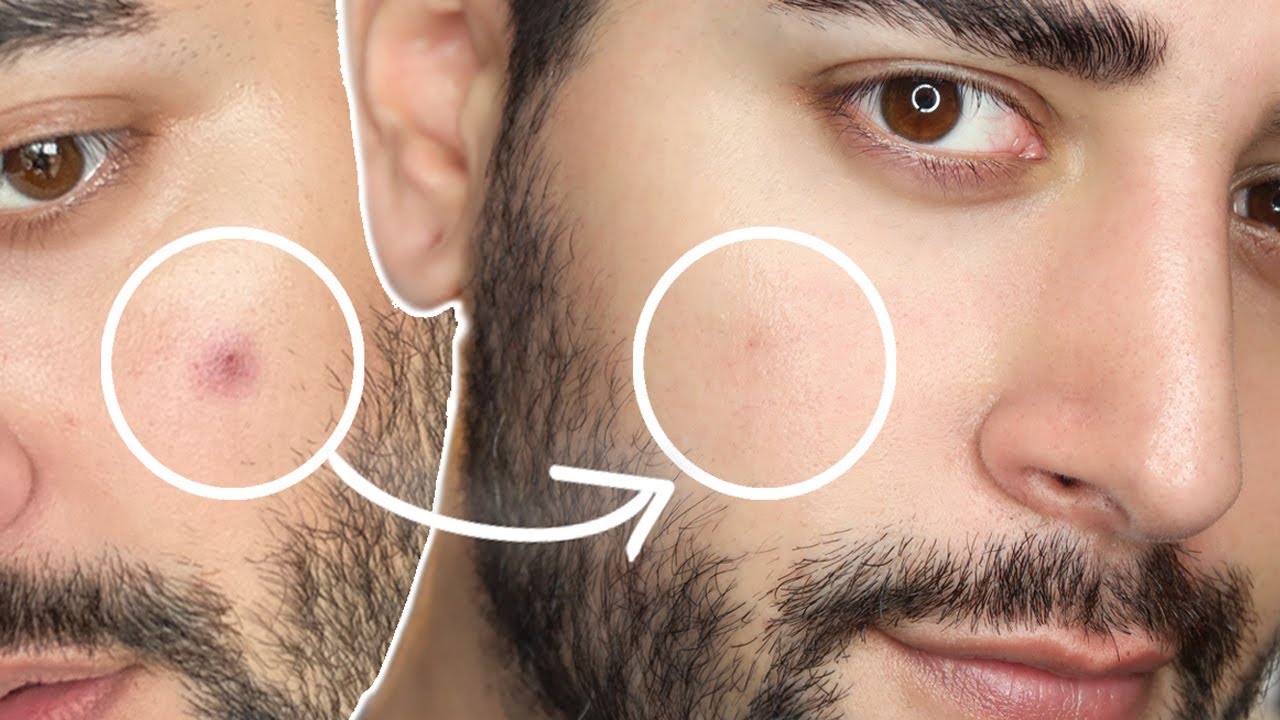Do you have dark spots or marks that don’t seem to go away on your face? Do you worry about these dark spots all the time and put on makeup every time you go out to hide them? If you can relate to any of these, it’s time to learn more about your skin and find a long-term way to get rid of your dark spots.
Every problem has a root cause, and to treat it, it’s important to find out what it is. So, let’s begin by understanding why your skin develops dark spots.
Skin pigmentation is another problem that goes hand in hand with dark spots. So, let’s talk about skin pigmentation and how it affects dark spots. In the next part of this article, we’ll talk about what causes dark spots on the face and body and give you some natural ways to get rid of them. At the end, we’ll look at some ways to avoid getting these dark spots in the first place. Let’s get started.
What does skin colour mean?
People often use words like “pigmentation” or “hyperpigmentation” to talk about the colour of their skin. People often use these terms for dark spots in the same way. But are they both the same thing, or is one different from the other?
Skin pigmentation, also called hyperpigmentation, is a general term for dark spots or patches on the skin, as well as a general darkening of the skin. The melanin pigment, which is what gives our skin its colour, is usually spread out evenly in our skin. We’ve talked about how dark spots happen when some parts of the skin make more melanin than others. This can happen for a number of reasons, including being exposed to the sun’s harmful UV rays or even hormones. Dark spots are just one type of skin pigmentation, and we’ll talk a lot about them in this article.
But there are many other kinds of skin discoloration, such as freckles, melasma, dark circles, etc. Every one of them happens for a different reason. For example, freckles are a common reaction to the sun, and they start to show up when a person is very young. On the other hand, age spots are darker spots that start to show up as we age. Melasma is dark brown patches on the skin, usually on the cheeks, that are caused by too much melanin. Injuries and inflammation can also sometimes leave dark spots. This is called pigmentation after an inflammation. Dark circles under the eyes are another common type of skin pigmentation that makes us look dull and tired. No matter what kind of pigmentation you have, you can control it by protecting yourself from the sun.
also read – Advantages of studying civil engineering in this modern world
Why do dark spots show up on your face and body?
As we’ve already talked about, dark spots happen when some parts of the skin make more melanin than other parts. Aside from the sun, hormonal changes, and inflammation, conditions like diabetes can also affect how much melanin your body makes. Here are some of the most common reasons why dark spots happen:
Changes in hormones:
Especially for women, changes in hormones can be a major cause of darkening of the skin. Melasma is a type of skin discoloration that looks like dark patches on the cheeks or forehead. This condition is common after giving birth.
Sun exposure:
Dark spots on the skin can be caused by the sun’s harmful UV rays. Most of the time, sun exposure causes freckles, sunspots, solar lentigines, or liver spots. These can be avoided if healthy habits about sun protection are learned at a young age.
Side effects of medicines: Some medicines have side effects, like changing the colour of your skin or making dark spots on it. Most reactions are caused by NSAIDs, or non-steroidal anti-inflammatory drugs.
Inflammation: Dark spots can also happen when the skin is inflamed or has been hurt. Acne or even eczema can cause these.
Irritation from certain products: Sometimes, using perfumes or certain hair products can cause skin irritation, which can lead to dark spots on the skin.
Diabetes: Diabetes can also make some parts of the skin make more melanin, which makes the skin darker.
As you can see, there are many different reasons why dark spots appear, which leads us to two important questions. How can we get rid of dark spots on our skin? And more importantly, can we stop dark spots from appearing in the first place? Before we talk about that, it’s important to know the difference between dark spots and acne scars, which people often mix up.
Scars from acne vs. dark spots
It’s important to tell the difference between acne scars and dark spots because the way to treat each is very different. Most dark spots are just on the surface, and they aren’t as bad as acne scars. Sometimes, the dark spots on our skin that we think are just blemishes turn out to be deep acne scars.
Post-inflammatory hyperpigmentation is when mild or moderate acne leaves light or dark brown spots on the skin. Over time, they fade away from the skin. Most acne scars are deeper and are caused by damage to skin layers below the surface. Most of the time, moderate to severe acne is to blame.
We’ve all been guilty of popping pimples, which turns out to be the main cause of acne scars. Some kinds of acne scars include:
Scars from an ice pick: These scars are deep, but they don’t have to be wide. They have rough edges and look like big pores that have been scooped out.
Boxcar scars are deep depressions in the skin that are wide and rectangular and have clear edges.
Rolling Scars: As the name suggests, these are large depressions with edges that slope outward.
Scars form when the tissues grow back together. They are hard to get rid of completely, but they may fade over time. But they can still be seen. Dark spots are easier to get rid of than other skin problems, but it can take anywhere from two months to three years for them to go away completely.
What to do about dark spots?
We already knew what dark spots are and what makes them happen. Now we’ll talk about how to get rid of dark spots on the skin, which is the most important part of this article. Let’s start by looking at various home remedies to treat dark spots. You can also use face wash for pimples and dark spots
1. Use home remedies to treat dark spots or pigmentation.
-
Turmeric
In every Indian home, turmeric has been used on the skin. Make a thick paste by mixing two teaspoons of turmeric with curd and besan. Use it as a face pack, then wash it off with lukewarm water. Dry off.
-
Tomato paste:
Tomato paste has a lot of lycopene, which keeps the skin from getting hurt by the sun. To get rid of dark spots and even out your skin tone, put tomato juice on your skin for 20 minutes and then wash it off with lukewarm water.
-
Manjistha:
Manjistha is a herb that is good for the skin in many ways. It cleans the blood and treats the skin from the inside. Manjistha tastes sweet, bitter, and acidic and is a good way to calm pitta. It helps skin stay healthy and look younger. To get rid of dark spots, you can take one or two Manjistha capsules every day. You can also mix manjistha powder with honey and leave it on your face for 15 to 20 minutes before washing it off and patting your skin dry.
-
Red lentils (Masoor Dal):
Masoor dal is an easy thing to find in every Indian home. Masoor dal face masks are a common way to get rid of dark spots. Soak 50 grammes of red lentil in a bowl of water for a whole night. Then, make a fine paste with a blender. After 20 minutes, wash your face with cold water to get rid of the paste.
-
An Extract of Green Tea:
Studies show that green tea may help get rid of dark spots on the skin when it is put on the skin. Pour boiling water over a green tea bag and let it sit for a few minutes. Take it off and rub it over the spots on your skin that are dark. You can also get rid of dark circles by putting green tea bags under your eyes.
-
Sandalwood:
Make a thick paste by mixing 1 teaspoon of sandalwood powder, 1 teaspoon of orange zest, and 1 teaspoon of orange juice. Use it as a mask on your face, focusing on the dark spots. Leave it on for 20 minutes before rinsing it off with warm water. This should be done twice or three times per week.
-
Saffron:
Saffron is a great natural way to get rid of dark spots and uneven skin tone. Make a paste by putting a few strands of saffron in a small amount of water and adding two teaspoons of turmeric powder. Use this paste on your face to get rid of dark spots and pigmentation.
-
Buttermilk:
Especially in the summer, buttermilk can be a very refreshing drink. Did you know, though, that it can also be used to get rid of dark spots? Use a cotton ball to put buttermilk on the dark spots. Leave it on for 15 to 20 minutes before rinsing it off. If you have oily or acne-prone skin, you can also add a little bit of lemon juice to the buttermilk.
-
Apple cider vinegar:
Put the same amount of water and apple cider vinegar in a bowl and mix them together. Then, put the mixture on the dark spots and pigmentation marks. Rinse with warm water, and then use your favourite serum and moisturiser. If the mixture hurts your skin, add more water.
-
Aloe vera gel:
Aloe vera is a wonder cure for all skin problems. To get rid of dark spots on your face, all you have to do is put aloe vera juice or gel on them and leave it on for 30 minutes before washing it off. You can also sleep with it on your face. Rinse with warm water, and then use a toner and moisturiser.
2. Use night cream to get rid of dark spots:
Using night cream for a while can lessen the look of dark spots and even help fade dark spots that are already there. While we sleep at night, our skin is busy getting new cells and fixing itself. I know it’s hard to stay awake after a long, tiring day, but putting on night cream for a few extra minutes can do great things for your skin. Dark spots can be removed from your skin with the help of Nature’s Lavish Rejuvenating and Brightening Night Cream. It has a lot of saffron, which makes the skin lighter and brighter, reduces dark circles and pigmentation marks, and fixes fine lines, age spots, and other signs of ageing.
3. Get into good skin care habits
Just like with any other problem, it’s always better to be safe than sorry when it comes to dark spots. Here are some ways to keep your skin from getting dark spots:
Always wear sunscreen. With good sun protection habits, dark spots and pigmentation won’t show up. Make sure to put on sunscreen with at least 20 SPF. Every two to three hours, put on more sunscreen.
Eat good food! A balanced diet and a healthy way of life can help keep your skin healthy and stop dark spots and other skin problems from showing up. Eat lots of vitamin and mineral-rich fruits and vegetables.
Taking nutritional supplements can be a good way to make up for the things your diet is missing. You can buy vitamin C supplements and other antioxidants without a prescription.
Quit smoking. Studies have found a possible link between smoking cigarettes and getting pimples.
Wearing a hat with a wide brim and sunglasses will protect your skin from sun damage even more.
4. Give your skin regular care
As we’ve already talked about, dark spots can happen for both outside reasons (like being in the sun) and inside reasons (hormonal imbalance). It’s hard to get rid of dark spots that come from the inside by just putting creams or oils on the skin. To treat these dark spots, you need to figure out which dosha is out of balance (Vata or Pitta). Then, to keep the dosha in balance, you should eat right. Eat and drink a lot of water, fruits, beans, eggs, garlic, and onions, because these foods help keep dark spots from showing up.



